Mehndi, or henna, is a traditional form of body art popular in many cultures, particularly in South Asia, the Middle East, and North Africa. It is applied to the skin using a paste made from the powdered leaves of the henna plant and is often used during celebrations, weddings, and festivals.
Front-hand mehndi Design specifically refers to designs applied to the palm and back of the hand. These designs can vary from simple patterns to intricate and elaborate artwork, depending on the occasion and the individual’s preferences.

Categories of Front Hand Mehndi
Typically, front hand mehndi designs are categorized into:
1.Traditional Patterns: These include floral motifs, paisleys, and geometric shapes that often reflect cultural heritage.

2. Modern Styles: These tend to feature bold lines, minimalistic elements, or even fusion with other art forms, making them popular for contemporary celebrations.
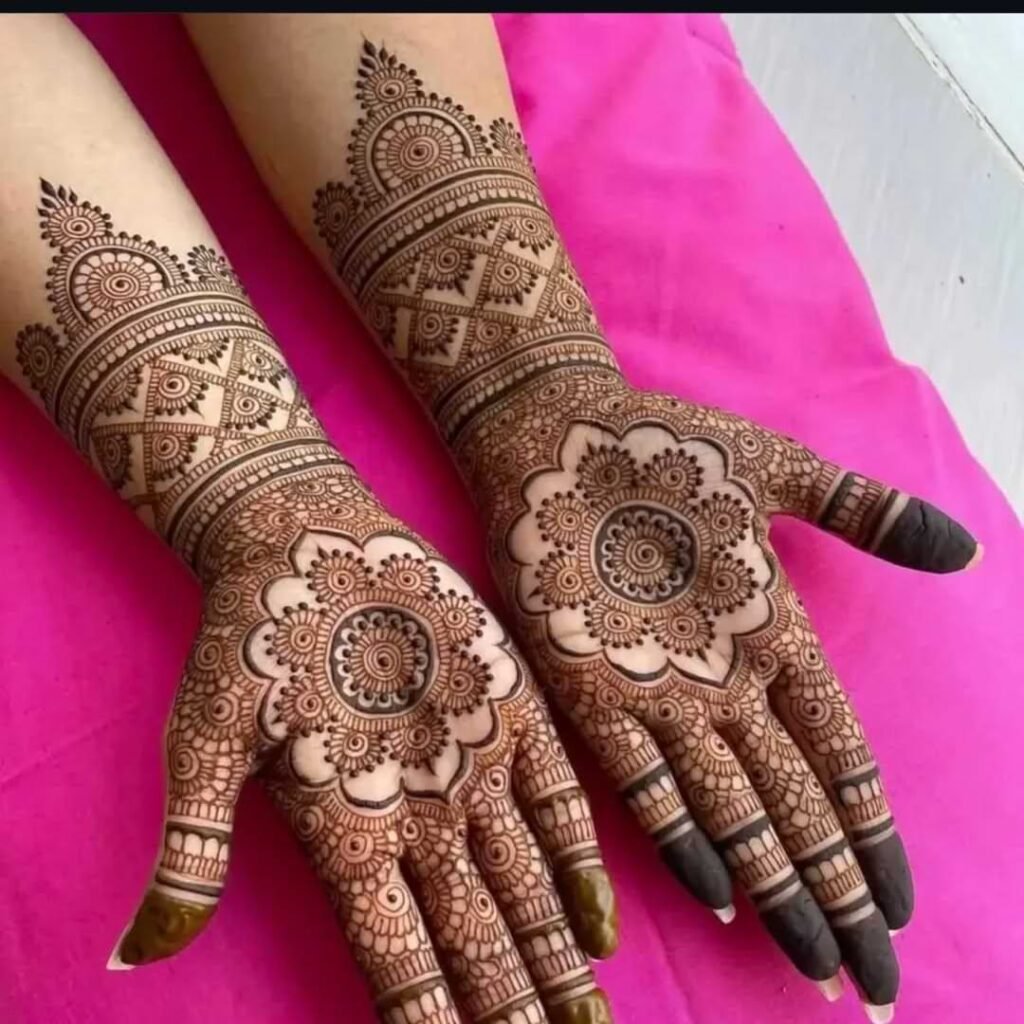
3. Bridal Mehndi: This is the most intricate type of front hand design, often extending to the arms with detailed patterns, peacocks, mandalas, and symbolic elements.
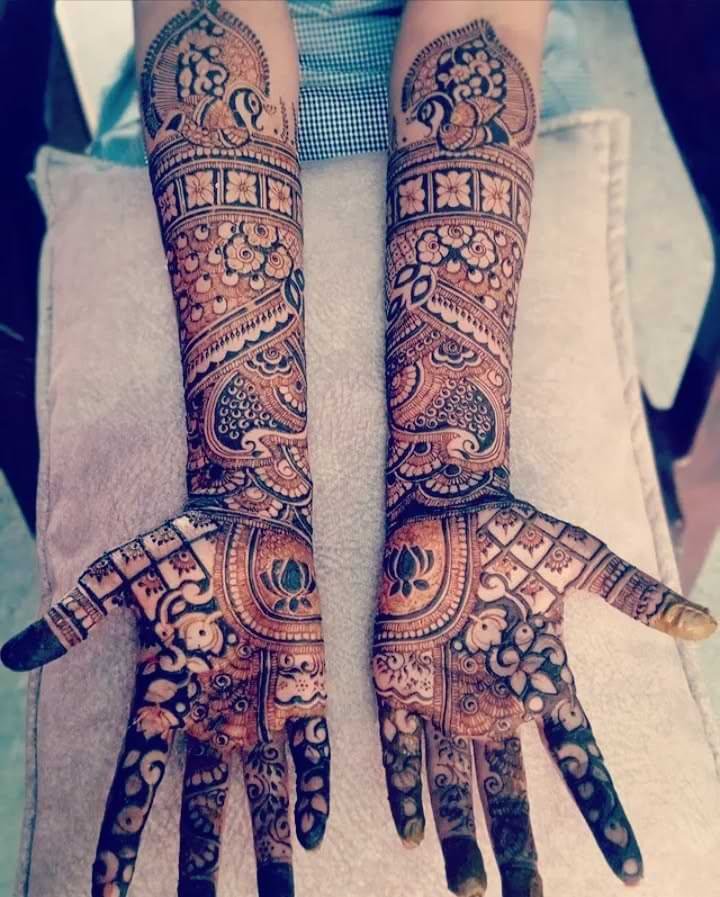
4. Arabic Mehndi Designs: Characterized by bold, flowing patterns with fewer details and often extending to the forearm.
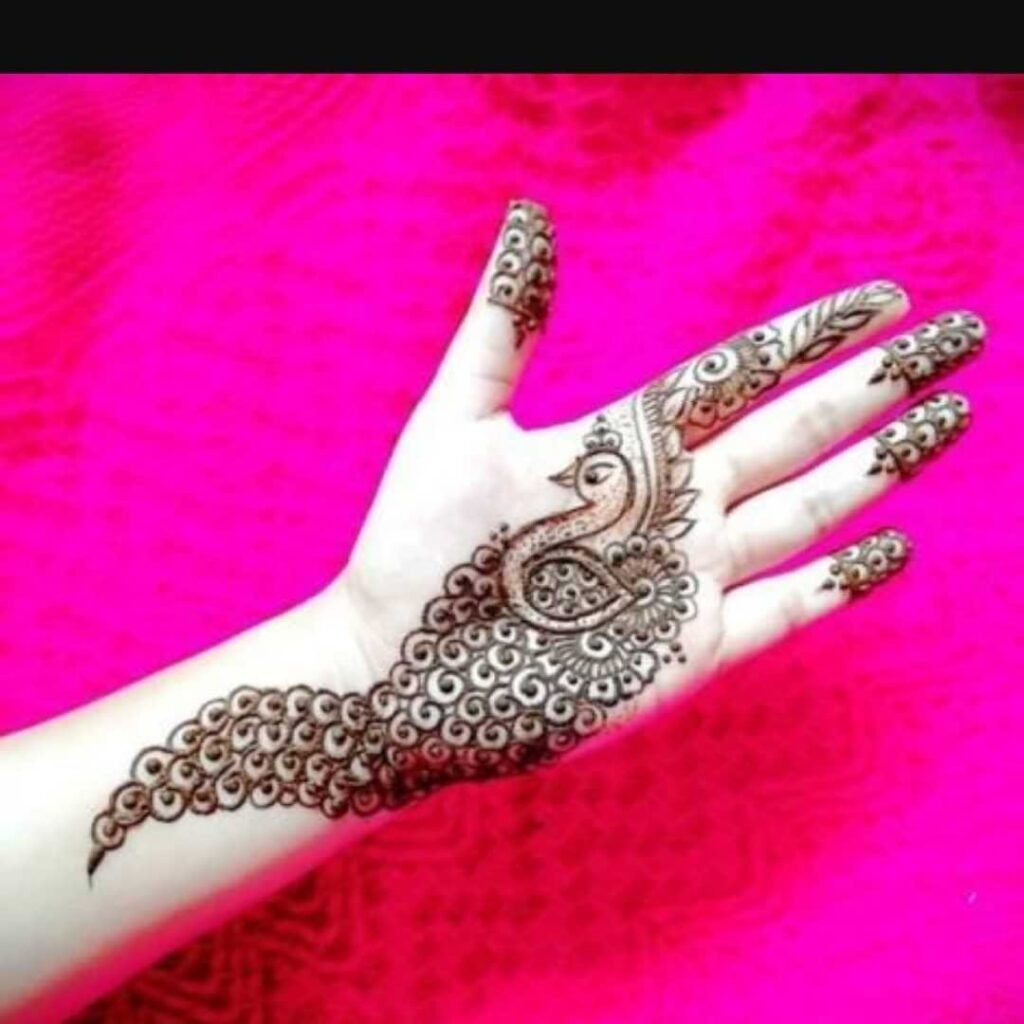
5. Indian Mehndi Designs: Rich in detail, often covering the entire front and back of the hand, with heavy motifs like flowers, vines, and paisleys.

Key Elements of Front Hand Mehndi Designs:
- Floral Motifs: Often a symbol of beauty and femininity.

- Geometric Shapes: These include hexagons, diamonds, and circles.

- Peacocks and Birds: These are popular elements in bridal mehndi, representing beauty and love.

- Intricate Patterns: These can include lace-like designs, mandalas, or henna art that weaves through the palm and fingers.

The application of mehndi is not just an aesthetic practice; it also carries cultural significance. For example, in Indian traditions, a rich mehndi design on the front hand is seen as a symbol of good fortune and joy for brides. The darker the stain left by the henna, the more auspicious it is believed to be.
Whether you’re preparing for a wedding, festival, or just looking to adorn your hands for a special occasion, front hand mehndi designs are a timeless way to add beauty and cultural touch to your look.
Mehndi Application And After- Process For Front Hand
The mehndi application process for the front hand involves several steps to ensure the design is neat, long-lasting, and beautifully applied. Here’s a step-by-step guide:
1. Preparation
- Clean the Skin: Wash the hands thoroughly with soap and water to remove any dirt, oils, or lotions that may interfere with the mehndi’s stain.

- Dry the Hands: Pat your hands dry using a clean towel or let them air dry.

2. Henna Paste Preparation
- Henna Powder: If using fresh henna powder, mix it with water, lemon juice, and sugar to create a smooth paste. You can also add essential oils (like eucalyptus or tea tree oil) for better color and fragrance.
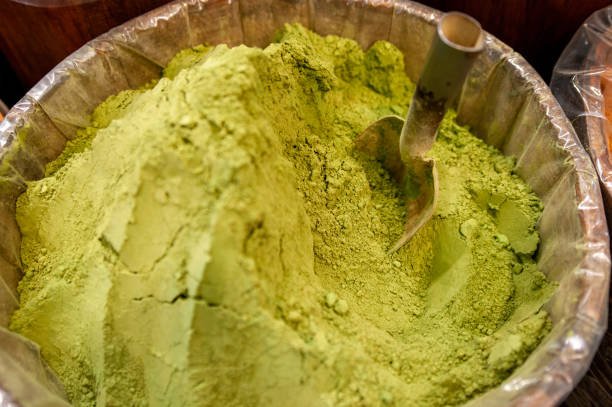
- Let It Rest: Allow the paste to rest for a few hours to release its natural dye.
3. Application of Mehndi
- Using a Cone: Fill a small cone (or a piping bag) with the prepared henna paste. This cone is used to create the design with precision.

- Start with Simple Patterns: Begin applying simple designs on the palm (like spirals, leaves, and dots). Work outward from the center of the palm.
- Intricate Detailing: Once the main design is done, you can add finer details such as floral motifs, paisleys, and geometric shapes on the back of the hand, fingers, and wrists.
- Cover All Areas: Ensure the design extends to all desired areas—fingers, wrist, and even the forearm if needed.
4. Drying the Mehndi
- Let It Dry: Allow the henna paste to dry for about 20-30 minutes. Avoid touching or smudging it during this time. You can also sit under a fan to speed up the drying process.

- Avoid Water: Do not wash hands or apply any water to the mehndi during the drying phase.
5. Enhancing the Stain
- Sugar-Lemon Mix: To help darken the mehndi stain, apply a mixture of sugar and lemon juice gently on the dried henna. This will give a glossy finish and improve the stain’s longevity.

- Leave It on for Hours: Let the paste sit on the skin for at least 4-6 hours or overnight. The longer the paste stays, the deeper the stain will be.
6. Removing the Paste
- Scrape Off the Paste: Once the paste has dried and has set for several hours, gently scrape it off using a blunt object (like a spoon or your fingers).
- Avoid Water: Do not wash your hands immediately after removing the paste. Just brush off any leftover remnants.
7. Aftercare
- Moisturize: After scraping off the mehndi, moisturize your hands with a gentle lotion to prevent the skin from drying out.
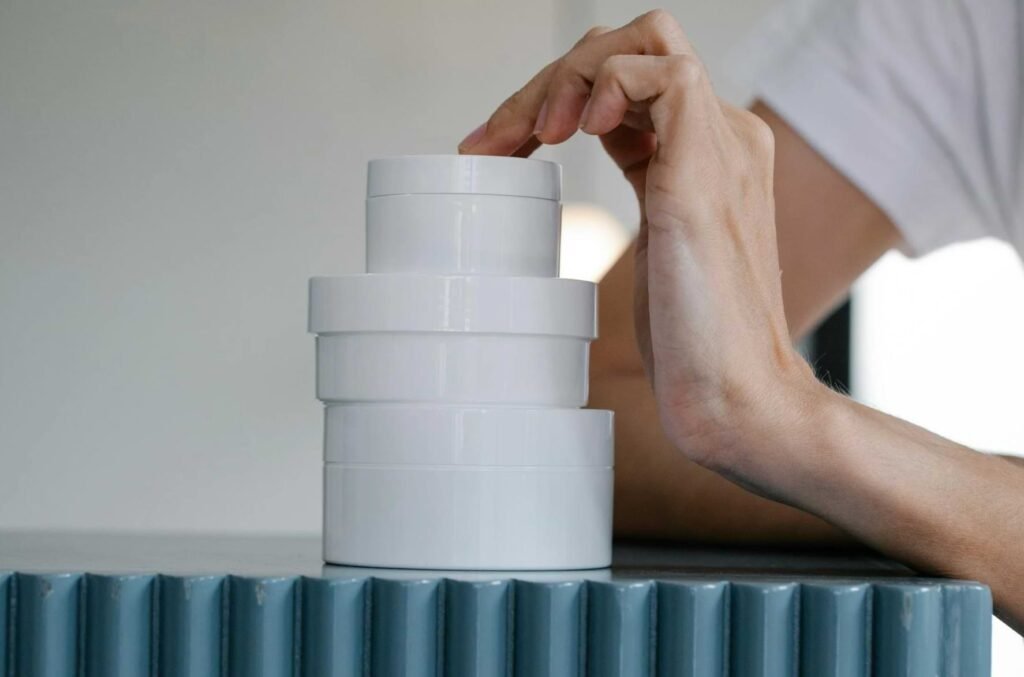
- Avoid Water for 24 Hours: To ensure the stain darkens fully, avoid water exposure for 24 hours after the paste is removed.
Benefits of Applying Mehndi On Front Hand
Applying mehndi on the front hand offers several benefits, both physical and cultural:
1. Cooling Effect

Mehndi has a natural cooling property that helps to lower body temperature. Applying it to the palms is especially helpful during hot weather, as it provides relief from the heat.
2. Skin Health
Henna, the main ingredient in mehndi, has antiseptic, anti-inflammatory, and antibacterial properties. It helps in soothing skin irritations, minor cuts, and burns, promoting overall skin health.
3. Stress Relief and Relaxation
The process of applying mehndi is often calming. It allows for quiet reflection and can reduce stress and anxiety, making it a relaxing ritual for many.
4. Symbol of Good Luck

In many cultures, mehndi is considered a symbol of good fortune and prosperity, particularly for brides. It is believed that the darker the stain, the more auspicious the future will be.
5. Enhances Beauty
Mehndi designs on the front hand can enhance the beauty of a person’s hands, especially during festivals, weddings, or special events. The intricate patterns and designs add elegance to the hands.
6. Promotes Hair Growth (Indirect Benefit)

While mehndi is applied to the skin, its ingredients, especially henna, are sometimes used in hair treatments. The practice of using henna indirectly encourages a natural balance, benefiting the overall health of the body.
7. Non-Toxic and Natural
Unlike many chemical-laden beauty products, mehndi is a natural and non-toxic option for skin decoration, making it safe for most people.
Overall, mehndi is not just a decorative art form but also brings physical and emotional benefits, while symbolizing joy, beauty, and good fortune.
Fun Facts About Front Hand Mehndi
Here are some fun facts about front-hand mehndi that add charm to its beauty and cultural significance:
Symbol of Good Luck: A dark mehndi stain, especially on the front hand, is believed to bring good fortune, prosperity, and happiness. In weddings, it’s considered a symbol of a strong and loving marriage.
Ancient Tradition: Mehndi has been used for over 5,000 years! The Egyptians, especially the royals, used henna to decorate their hands and bodies for both aesthetic and health reasons, making it one of the oldest art forms in the world.
Cooling Effect: Applying mehndi on the palms and front hand is believed to cool the body, making it a popular practice in hot weather. This is why it’s commonly used during summer festivals.
Unique Wedding Designs: Bridal mehndi designs are often intricate and elaborate, covering not just the hands but arms and feet too. These designs symbolize love and good luck for the bride.

5. Temporary Tattoo: Unlike permanent tattoos, mehndi fades away over time, lasting anywhere from 5 to 14 days, depending on skin type and aftercare.
6. Therapeutic Process: Applying mehndi is a form of meditation for many artists, as it requires patience and focus, making the process both calming and enjoyable.
Conclusion
In conclusion, front-hand mehndi is not just a beautiful form of body art but a cultural tradition that carries deep significance. From its cooling effects and skin benefits to its role in symbolizing good luck, joy, and prosperity, mehndi has stood the test of time. Whether applied during weddings, festivals, or other special occasions, it enhances the beauty of the hands while adding a personal touch of tradition. With intricate designs that vary from simple patterns to elaborate bridal artwork, mehndi continues to be a cherished practice across many cultures. By following proper aftercare, one can ensure the design lasts longer, making it a perfect way to celebrate and adorn oneself with creativity and meaning.
FAQ’s
1. How long does mehndi last on the front hand?
Mehndi typically lasts between 5 to 14 days, depending on factors such as skin type, aftercare, and the quality of the henna paste. The design tends to fade gradually over time.
2. How can I make my mehndi stain darker?
To achieve a darker stain, allow the henna paste to stay on your skin for several hours (ideally 4-6 hours or overnight). After removing the paste, apply a sugar and lemon mixture to enhance the color. Avoid washing your hands immediately after removing the paste.
3. Can I apply mehndi on my front hand if I have sensitive skin?
Yes, henna is generally safe for most skin types, but it’s recommended to do a patch test before applying it to the entire hand. If you have sensitive skin, ensure the henna is 100% natural and free from harmful chemicals.
4. What are the benefits of applying mehndi?
Mehndi offers several benefits, including a cooling effect, promoting skin health, and providing relaxation. It’s also believed to bring good luck and prosperity, especially during weddings and festivals.
5. How should I take care of my mehndi design?
To ensure your mehndi design lasts longer, avoid water exposure for the first 24 hours, moisturize your hands regularly, and avoid scrubbing or rubbing the design. Keep your hands away from harsh chemicals or excessive heat.
6. Is mehndi safe for pregnant women?
Mehndi is generally safe during pregnancy when applied in moderation and with natural, chemical-free henna. However, it’s always best to consult a healthcare provider before using it.

